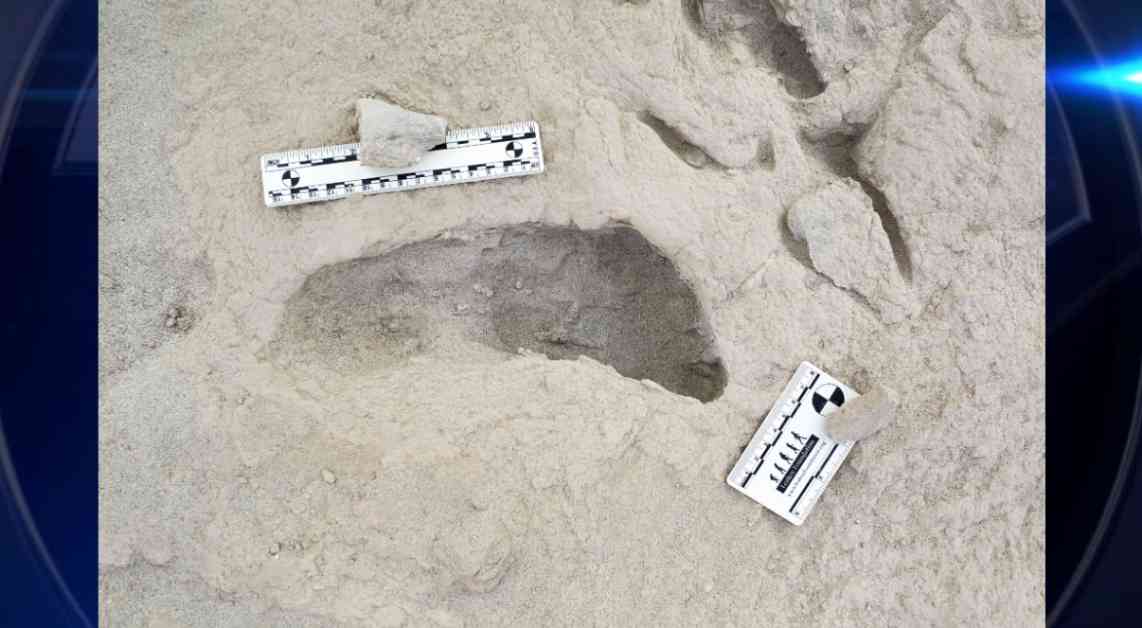More than 1.5 million years ago, two different species of ancient humans crossed paths on a lakeshore, as revealed by a recent discovery. This discovery was made through the finding of fossilized footprints imprinted into soft mud, preserving a unique moment in history. The footprints suggest that these early human species coexisted as neighbors in the same habitat, rather than competing for territory.
The excavation that led to this discovery took place at Koobi Fora in Kenya in 2021, with further detailed excavations in 2022 uncovering a total of 11 hominin tracks. These tracks, along with nonhuman tracks of birds and other animals, were preserved in sediment and revealed insights into the behavior of these ancient human species.
The footprints were determined to belong to two different species: Homo erectus and Paranthropus boisei. Homo erectus, a species closely related to modern humans, made three footprints, while Paranthropus boisei left a long trackway. The coexistence of these two species in the same location over an extended period of time suggests that they were able to share the landscape without significant competition.
The discovery of these footprints provides a unique glimpse into the past, showing how different hominin species interacted and coexisted. It offers valuable insights into the behavior and movements of these ancient humans, shedding light on a period of history that is otherwise difficult to observe directly.
While genetic evidence has shown interbreeding between different hominin species in the past, the discovery of these footprints adds a new dimension to our understanding of ancient human interactions. The coexistence of Homo erectus and Paranthropus boisei in the same environment highlights the complexity of human evolution and the interactions between different species within the same lineage.
Overall, this discovery opens up new possibilities for research and exploration into the history of human evolution. By studying these fossilized footprints, researchers can continue to uncover the mysteries of our ancient ancestors and gain a deeper understanding of how different human species coexisted and interacted in the distant past.
